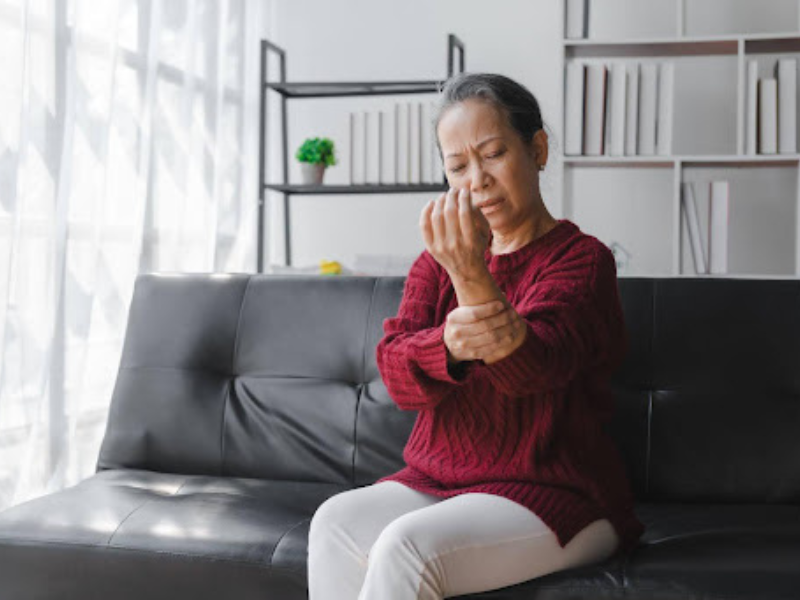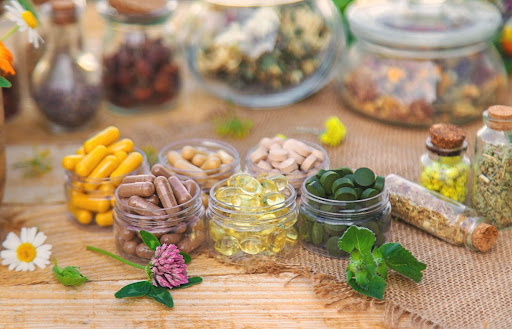
Managing Menopause Joint Pain: A Step-by-Step Guide
Menopause welcomes a host of changes in a female body, and joint pain is the most unexpected yet the most common symptom. Menopause and joint pain can affect your everyday life significantly, resulting in discomfort, reduced mobility and increased fatigue.
But, the best part about this is that there are methods to help manage and eliminate menopause joint pain. There are natural remedies and medical treatments that are available to treat joint pain and make your life painless and enjoyable.
Know About Menopause Joint Pain and Why Does it Occur?
Menopause joint pain is also called “menopausal arthralgia”, which refers to aching, swelling and stiffness in joints. Reports also state that 32.9% of women have cited that muscular discomfort and joint pain has been the most significant discomfort during their menopause. The decline in the hormonal level especially in estrogen hampers joint health.
Estrogen is responsible for reducing the inflammation and keeps the cartilage, the protective tissue between joints healthy. The moment the estrogen level starts decreasing, the ability in the body to retain moisture in the tissues nearby the joints also falls, resulting in exacerbating discomfort in the joints.
Menopause, Joint Pain and Fatigue: Triple Challenge
Well, menopause is a full circle in the biological sphere of a woman, as it is the ending of the menstrual cycle and her reproductive years. Joint pain comes hand-in-hand with menopause increasing the discomfort, but fatigue is another symptom that many women have experienced.
While women go through the menopausal stage, they experience hormonal fluctuations which leads to poor sleep hence, this marks the rise of fatigue. When menopause, joint pain and fatigue combine with each other, they create a cycle where pain intervenes in sleep, resulting in more fatigue and making the joint pain exacerbates.
How to Ease Joint Pain in Menopause: Medical and Lifestyle Changes
If you are concerned about how to ease joint pain in menopause? Then, the first step will be adopting a holistic approach that will include therapies, lifestyle changes and medications. Listed below are some effective approaches that will help you overcome joint pain:
1. Maintaining a Healthy Weight
It is important that you start carrying extra weights as it will put added pressure on the joints, especially on your lower back, knees and hips. Therefore, you have to keep yourself engaged in physical activities such as gymming, swimming, yoga and cycling. Also, monitor what you eat, make your diet rich with anti-inflammatory foods such as fruits and vegetables, soy products, Omega-3 fatty acids and whole grains.
2. Hormone Replacement Therapy (HRT)
For few women, the menopause joint pain might require HRT, as it helps in reintroducing the estrogen levels in a female body. However, it is always advised to know about the benefits and consequences of HRT from a healthcare professional
3. Anti-inflammatory Medications
Non-steroidal anti-inflammatory drugs (NSAIDs), such as ibuprofen, can give you relief from your joint pain temporarily. However, always get in touch with a professional before taking any medicines.
Natural Remedies for Joint Pain During Menopause: General Substitutions
There have been cases where women have attained relief from their joint pain by accepting natural remedies. These remedies do not impose any kind of side effects on your body and therefore; they are safe to adopt. Listed below are some of the natural remedies for you:
1. Omega-3 Fatty Acids
Omega-3s are powerful anti-inflammatory agents which are found in flax seed, fish oil and chia seeds. Regular intake of omega-3 will help you decrease inflammation in your joints and ensure that menopause joint pain is eased out without giving you any side effects.
2. Herbal Supplements
There are some herbal remedies, such as Boswellia, ginger and devil’s claw also have anti-inflammatory properties that will help you with your menopause joint pain. Make sure that you are consulting your healthcare professional before taking any herbal supplements, just to be sure that they are safe for you.

3. Acupuncture
This method is an age-old Chinese therapy that includes inserting thin needles into the pain points area of the body, helping you stimulate your energy flow, as well as decrease your joint pains. Many women have also stated that they have found significant relief from their menopause joint pain.
Read More: Acupuncture for Menopause
Menopause Joint Pain Treatment: Professional Assistance When Required
While natural remedies and lifestyle changes are bringing relief to your joint pain, it is also important for you to consider professional help to treat your menopause joint pain. Listed below is how menopause joint pain treatment can be customized according to your requirements.
1. Physical Therapy
A physical therapist will understand your pain points and curate a customized exercise program to help your muscles get strengthened around your joints, enhance agility and decrease your pain. They also give movements and posture suggestions to protect your joints from any further strain.

2. Joint Support Devices
There are many orthopedic supports available in the market, such as orthotic inserts and braces, that will help in reducing stress on the joints and enhance alignment. These devices are mostly helpful for curing joint pain in your lower back, knees and even hips.
3. Corticosteroid Injections
Corticosteroid injection is very effective in providing relief from severe menopause joint pain by decreasing inflammation around affected areas. This is effective when other treatments have failed to reduce joint pain.
4. Surgical Options
In very rare situations or cases, surgery may appear to be a necessary step to repair or even replace severely injured joints. This method is considered to be the last option, when any of the above stated treatments have not been effective in reducing menopause joint pain.
How to Stop Joint Pain in Menopause: Long-term Approaches
Managing joint pain during menopause is just not about acquiring immediate relief, it is also important to consider long-term relief. Here are some approaches that will you to answer, how to stop joint pain in menopause:
1. Strengthen Your Muscles
It is important to strengthen your muscles around your joints as it helps in taking the pressure off from the joints. Emphasize on building your muscles in your core arms and legs for giving better support to the skeletal system of the body.
2. Improve Your Posture
Poor posture leads to joint pain, especially around the neck, shoulders and back areas and gradually increasing your discomfort. Be attentive about your sitting, standing and even sleeping posture throughout the day, especially if you have to be sitting for long hours. Use an ergonomic chair for maintaining a better sitting posture while working.
3. Stay Optimistic and Manage Stress
Stress can be a sole reason to worsen your joint pain as it increases inflammation and muscle tension. Therefore, adopting stress management approaches such as meditation, deep breathing and yoga will help in keeping your stress under control and enhance your overall well being.
Key Takeaways
Menopause joint pain can be overwhelming at times, but with the right approaches and practices it can be easily mended. There are a wide variety of treatments available from natural remedies to professional assistance, all are equally effective to ease joint pain in menopause. Stay active, engaging yourself in physical activities and maintaining a healthy lifestyle will help you in overcoming menopause joint pain.
But always remember to consult a healthcare professional before adopting any practices or consuming medicines to be aware about the side effects it might cause to your body and worsen the situation.
Citations
- https://www.nuhsplus.edu.sg/article/shedding-light-on-menopausal-joint-pain
- https://www.ncbi.nlm.nih.gov/pmc/articles/PMC7710408/
- https://www.channelnewsasia.com/singapore/sg-women-menopause-arthralgia-muscle-joint-pain-symptom-4054211
- https://www.medicalnewstoday.com/articles/menopause-and-joint-pain#What-causes-joint-pain-during-menopause

Prativa Chatterjee





